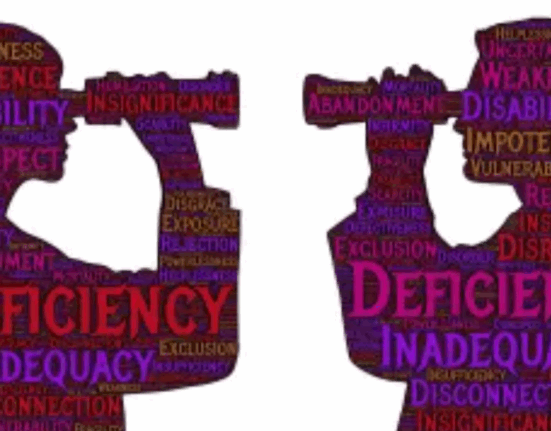Last Updated on June 28, 2024 by Rachel Hall
- Why Non-monogamous Relationships and Polyamory Become So Popular
- Introduction to Non-monogamous Relationships
- Current Trends in Non-monogamous RelationshipsStatistical Overview
- Social and Cultural Factors Influencing Nonmonogamous Relationships
- Legal and Ethical Considerations in Non-monogamous Relationships
- Personal Stories and Case Studies in Polyamory
- Conclusion and Future Outlook on Non-monogamous Relationships
- Frequently Asked QuestionsWhat is the difference between an open marriage and polyamory?
Why Non-monogamous Relationships and Polyamory Become So Popular
Introduction to Non-monogamous Relationships
Non-monogamous relationships are becoming increasingly prevalent in today’s society, challenging the traditional norms of monogamy and marriage. This shift reflects changing attitudes and a response to the complexities of modern life. People are exploring relationship structures like polyamory, open relationships, and ethical non-monogamy to find fulfilment and meet diverse needs. In this article, we will delve into the reasons behind the rise of non-monogamous relationships, the benefits and challenges they present, and the cultural and legal considerations surrounding them.
Current Trends in Non-monogamous RelationshipsStatistical Overview
Recent surveys indicate a growing openness towards non-monogamous relationships. According to a study by Match.com, nearly 1 in 5 Americans have engaged in some form of consensual non-monogamy. Similarly, a 2023 YouGov survey reported that around 20% of adults have experimented with polyamory or other forms of non-monogamy. These numbers show a significant shift from traditional monogamous relationships and highlight the increasing acceptance of diverse relationship structures.
Influence of Media and Pop Culture
The portrayal of non-monogamous relationships in media and pop culture has significantly contributed to their growing acceptance. Shows like HBO’s “Scenes from a Marriage” and the reality TV series “Couple to Throuple” have brought these relationship structures into the mainstream. Media coverage normalises non-monogamous relationships and encourages more people to consider them as viable options. For instance, the Peacock reality show highlights the complexities and joys of polyamorous relationships, helping to demystify and destigmatise them.

Social and Cultural Factors Influencing Nonmonogamous Relationships
Changing Attitudes Towards Monogamy
Re-evaluation of Monogamy: The traditional model of monogamous relationships is being reconsidered as people seek more fulfilling and flexible arrangements.Desire for Personal Growth: Individuals are increasingly motivated by personal growth and self-actualisation, which can be facilitated by engaging in non-monogamous relationships.Increased Acceptance Among Gen Z: Younger generations, particularly Gen Z, show a higher openness to non-monogamy and diverse relationship structures.
Impact of Individualism and Self-actualisatio
Emphasis on Personal Happiness: In an individualistic culture, there’s a growing focus on personal happiness and fulfilment.Exploration of Identity: Non-monogamous relationships allow individuals to explore different aspects of their identity and meet diverse emotional and sexual needs that a single partner might not fully satisfy.Polyamory and Self-discovery: Polyamory and other forms of consensual non-monogamy offer avenues for self-discovery and personal development.
Influence of Media and Pop Culture
Normalisation through Media: The portrayal of non-monogamous relationships in TV shows and movies, such as HBO’s “Scenes from a Marriage” and the reality series “Couple to Throuple,” helps normalise these relationship structuresIncreased Media Coverage: Media coverage of polyamory and open relationships encourages public discussion and acceptance.Positive Representation: Shows and documentaries often highlight the complexities and joys of polyamorous relationships, helping to demystify and destigmatise them.
Broader Social Trends
Shift from Traditional Norms: Society is moving away from traditional monogamous norms towards more inclusive and flexible relationship models.Community and Support Networks: Non-monogamous relationships often provide enhanced support networks, fostering a sense of community and shared responsibility among multiple partners.Recognition of Diverse Needs: There is a growing recognition that one partner cannot meet all of an individual’s emotional and sexual needs, leading to the exploration of non-monogamous arrangements.
Benefits of Non-monogamous Relationships and Polyamory
Enhanced Support Networks
Shared Responsibilities: Non-monogamous relationships allow multiple partners to divide tasks like childcare and household chores, lightening the load for each individual.Broader Emotional Support: Having multiple partners provides diverse emotional support, creating a strong network that can better handle stress and challenges.
Personal Growth and Fulfilment
Varied Emotional Experiences: Engaging in polyamorous relationships enriches personal life through a variety of emotional connections.Increased Sexual Satisfaction: Multiple partners offer opportunities for diverse sexual experiences, leading to greater satisfaction.Higher Relationship Satisfaction: People in consensual nonmonogamous relationships often report higher overall relationship satisfaction due to flexibility and variety.
Flexibility and Freedo
Reduced Pressure: Polyamory reduces the pressure on a single partner to fulfil all needs, fostering a more relaxed relationship dynamic.Opportunities for Exploration: Individuals can explore different relationship dynamics, finding the most fulfilling structure for them.
Improved Communication Skills
Enhanced Communication: Clear and open communication is vital in non-monogamous relationships, leading to improved relationship quality.Better Conflict Resolution: Navigating multiple partnerships enhances skills in resolving conflicts and managing emotions.
Stronger Community Ties
Inclusive Social Networks: Polyamorous relationships help build inclusive and supportive communities where individuals feel accepted.Resource Sharing: Partners in non-monogamous arrangements can pool resources, such as time and skills, creating a more supportive living environment.
Challenges and Criticisms of Non-monogamous Relationships
Despite the reasons polyamory has become so popular, there is still considerable social stigma. Many people view non-monogamy as morally questionable or unstable, leading to discrimination and isolation. Misconceptions about polyamory specifically create additional challenges.Managing multiple relationships can be challenging. Issues like jealousy, possessiveness, and time management are common. Unlike complete monogamy, which involves one spouse, polyamorous individuals balance multiple partners’ needs. Effective communication and clear boundaries are crucial.Legal and social systems favour traditional monogamous relationships, posing challenges for those in consensual nonmonogamy. Unmarried individuals in non-monogamous arrangements may face difficulties with housing, child custody, and healthcare. Finding support through a dating app can be complicated by limited legal protections.Non-monogamous relationships require high levels of emotional intelligence and maturity. Balancing multiple partners’ needs and maintaining healthy boundaries can be demanding. However, these relationships offer a more nuanced understanding of love and sex, potentially leading to deeper connections.

Legal and Ethical Considerations in Non-monogamous Relationships
The legal landscape for non-monogamous relationships is complex and varies by jurisdiction. In the U.S., some cities like Somerville, Massachusetts, have started recognising and protecting polyamorous partnerships. However, many legal systems still do not provide adequate protections for individuals in non-monogamous relationships, especially in areas like housing and child custody. Advocates are pushing for broader legal recognition and protection to ensure that these relationship structures are respected and supported.Ethical practices are crucial in maintaining healthy non-monogamous relationships. This includes obtaining consent from all partners, maintaining open communication, and establishing clear boundaries. Ethical non-monogamy emphasises honesty, respect, and mutual agreement, distinguishing it from infidelity and other non-consensual forms of relationship diversity. Resources like the book “The Ethical Slut” provide valuable guidance on navigating these relationships ethically.
Personal Stories and Case Studies in Polyamory
Personal stories from individuals in polyamorous relationships provide valuable insights into the practicalities and emotional dynamics of non-monogamy. These anecdotes highlight both the joys and challenges of managing multiple partners and offer lessons learned that can be helpful for others considering similar relationship structures. For example, memoirs and essays by polyamorous individuals often shed light on the real-life experiences of balancing multiple loving relationships.Many people in non-monogamous relationships report increased satisfaction and personal growth. However, they also emphasize the importance of communication and trust. Learning from these experiences can help others navigate the complexities of non-monogamy more effectively. By sharing these stories, individuals can gain a deeper understanding of what works and what doesn’t in non-monogamous arrangements.
Conclusion and Future Outlook on Non-monogamous Relationships
The rise of non-monogamous relationships reflects broader societal changes and a move towards more diverse and flexible relationship structures. As acceptance grows, we will likely see continued evolution in how relationships are understood and practised. The future may hold more inclusive legal protections and greater social acceptance for those choosing to engage in non-monogamy. This trend towards polyamory and consensual non-monogamy is likely to continue, offering more people the opportunity to find the relationship structure that best suits their needs.
Frequently Asked QuestionsWhat is the difference between an open marriage and polyamory?
An open marriage typically involves spouses who are open to having sexual relationships outside their primary partnership but do not form romantic attachments with others. Polyamory, on the other hand, involves having multiple romantic and/or sexual relationships simultaneously with the knowledge and consent of all involved.
Why do non-monogamous relationships seem to be on the rise?
Non-monogamous relationships seem to be gaining popularity due to shifting societal norms, greater acceptance of diverse relationship structures, and increased visibility in media and pop culture. This change is reflected in the growing number of people exploring consensual nonmonogamy and forming consensually nonmonogamous relationships.
How do you maintain a consensually nonmonogamous relationship?
Maintaining a consensually nonmonogamous relationship requires open and honest communication, clear boundaries, and mutual respect. It is crucial for each primary partner and spouse to consent to the arrangement and to regularly check in with each other to ensure that everyone’s needs are being met.

Rachel Hall, M.A., completed her education in English at the University of Pennsylvania and received her master’s degree in family therapy from Northern Washington University. She has been actively involved in the treatment of anxiety disorders, depression, OCD, and coping with life changes and traumatic events for both families and individual clients for over a decade. Her areas of expertise include narrative therapy, cognitive behavioral therapy, and therapy for traumatic cases. In addition, Rachel conducts workshops focusing on the psychology of positive thinking and coping skills for both parents and teens. She has also authored numerous articles on the topics of mental health, stress, family dynamics and parenting.








Leave feedback about this